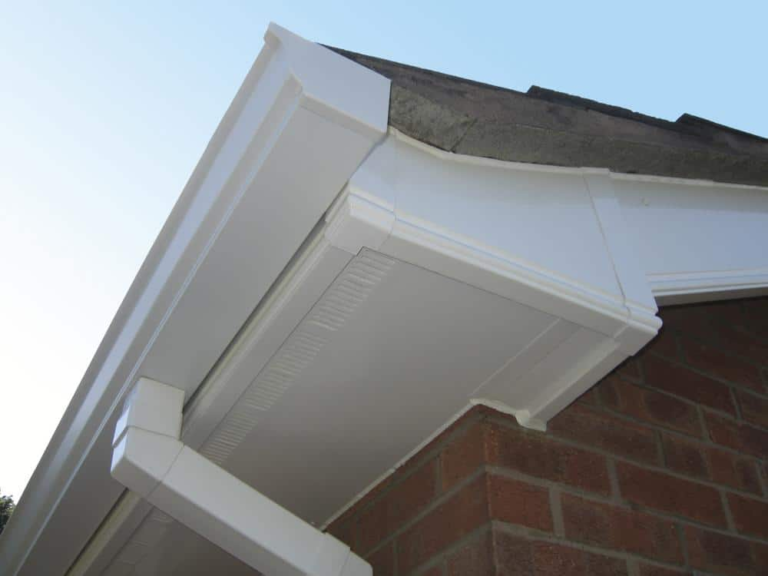eaves-maintenance0396
eaves-maintenance0396
The 10 Most Scariest Things About Fascia And Soffit Maintenance
Fascia and Soffit Maintenance: A Comprehensive Guide
When it pertains to keeping a house, the value of exterior elements like fascia and soffit can not be overemphasized. These components not just contribute to the visual appeal of a home however likewise serve necessary functions in terms of ventilation, moisture control, and structural integrity. This article explores fascia and soffit maintenance, covering their meanings, functions, common problems, and efficient maintenance practices to guarantee their longevity and performance.
Comprehending Fascia and Soffit
Fascia is the vertical board that runs along the edge of the roofing, generally where the roofing system eaves extend. It holds the gutter system in location and is often painted to match or highlight the exterior of the home.

Soffit, on the other hand, is the horizontal board that connects the fascia to the home’s outside wall. Soffits are typically vented to enable air flow into the attic space, promoting ventilation and preventing heat and moisture accumulation.
Functions of Fascia and Soffit
The main functions of fascia and soffit include:
- Protection: They protect the attic and roof structure from the components, including rain, snow, and bugs.
- Ventilation: The vented soffit enables appropriate air flow, which helps to prevent mold and condensation in the attic.
- Aesthetic Appeal: Both fascia and soffit contribute to the overall curb appeal of a home, enhancing its visual interest.
Typical Issues with Fascia and Soffit
Like any part of a home, fascia and soffit can face a variety of issues that might jeopardize their effectiveness. Common issues include:
- Rotting: Moisture and humidity can cause wood rot in both fascia and soffit, compromising their structural integrity.
- Bug Infestation: Insects, like bees, wasps, and termites, might nest in these areas if left unchecked.
- Peeling Paint: As weather and time take their toll, paint can start to peel, detracting from the home’s look and enabling more wetness seepage.
- Gutter Issues: Poorly installed or kept seamless gutters can overflow, causing water damage and soil erosion around fascia and soffit.
- Vent Blockages: Dust, particles, and nesting materials can hinder air flow from soffit vents, causing incorrect ventilation in the attic.
Maintenance Tips for Fascia and Soffit
Regular maintenance is essential for ensuring fascia and soffit remain practical and attractive. Here are some important maintenance steps:
1. Routine Inspections
Conduct regular inspections, specifically after extreme weather condition, to look for signs of damage or wear. Search for:
- Cracks or splits in the fascia
- Signs of rot or mold
- Loose or sagging sections
- Insect activity
2. Tidy Gutters and Downspouts
Blocked rain gutters can result in water pooling, which increases the danger of decomposing fascia and soffit. Make sure rain gutters and downspouts are without particles and working efficiently:
- Remove leaves, twigs, and dirt
- Flush with water to check drain
- Clear any clogs
3. Painting and Finishing
If fascia and soffit are wood, painting or staining them can boost their resistance to moisture and insects:
- Choose long lasting, weather-resistant paint or stain
- Repaint every couple of years as needed
- Repair any peeling before repainting to ensure adhesion
4. Guarantee Proper Ventilation
To prevent moisture buildup in the attic, ensure that soffit vents remain clear:
- Remove any blockages brought on by particles or insects
- Clear outside soffit holes to allow proper airflow
5. Change Damaged Materials
If any fascia or soffit boards reveal significant damage or rot, replace them instantly to avoid further concerns:
- Use rot-resistant materials like PVC or aluminum
- Consult a professional for substantial damage
6. Professional Inspection and Repairs
For any major concerns, such as insect invasions or extreme structural concerns, employ a professional for a thorough examination and repairs:
- Schedule a yearly professional evaluation
- Address issues promptly to avoid costly repairs later
Table: Maintenance Checklist for Fascia and Soffit
| Maintenance Task | Frequency | Notes |
|---|---|---|
| Visual Inspection | Regular monthly | Look for damage, rot, and insect activity |
| Clean Gutters | Bi-annually | Ensure efficient water drainage |
| Paint/Stain | Every 3-5 years | Usage weather-resistant materials |
| Clear Soffit Vents | Annually | Prevent air flow blockages |
| Replace Damaged Sections | As needed | Usage rot-resistant materials |
| Professional Inspection | Annually | Seek advice from an expert for major problems |
FAQs About Fascia and Soffit Maintenance
Q: How often should I inspect my fascia and soffit?A: It is recommended
to check these features monthly, particularly after extreme weather conditions. Q: Can I paint fascia and soffit myself?A: Yes, lots of property owners pick to do this themselves. Nevertheless, guarantee you follow appropriate precaution and select weather-resistant paint for long lasting results. Q: What must I do if I find rot on my fascia?A: If the damage is minimal, you might be able to
repair it with wood filler or epoxy. For extensive damage, changing the affected section is advisable. Q: How does poor ventilation impact my attic?A: Poor ventilation can cause moisture buildup, which can cause mold development, structural damage,and increased energy expenses due to inefficient heating and cooling. Q: Are there any products that are much better suited for fascia and soffit?A: Yes, vinyl, aluminum, and dealt with wood are popular choices due to their resilience and resistance to
rot and pests. Maintaining fascia and soffit is vital for protecting the integrity, security, and aesthetic appeal of a home. Routine assessments, cleaning, painting, guaranteeing proper ventilation,
and professional interventions when needed can considerably extend the life of these key parts. Property owners should remain proactive in their maintenance efforts to avoid expensive repairs and guarantee their homes stay protected from the components.

